Pluto-killing scientist talks
February 29, 2012

Poor little Pluto never saw it coming. Find out why Dr. Michael Brown pulled the plug on the one-time 9th planet.
Still miffed that Pluto’s not a planet anymore? The man responsible is coming to the county’s Natural History Museum to give his side of the story.
“I‘m ready for them to come in with rocks and throw their drinks and attack,” said Dr. Michael Brown, who’ll appear at the museum on Friday, March 2. “I know they are all sad about it.”
In 2005, Brown announced the discovery of Eris, an object larger than Pluto at the edge of the solar system. His team’s findings led the International Astronomical Union to revise the definition of “planet.” This demoted Pluto to a “dwarf planet,” causing an uproar among many who knew and loved the one-time ninth planet.
“Some of it is just funny,” Brown said of the backlash. “And some of it is just downright mean, which is almost funnier.”
Brown is a professor of planetary astronomy at the California Institute of Technology. His work has been featured in publications including the New York Times, The New Yorker and Discover magazine. In 2006, he was honored as one of Time Magazine’s “100 Most Influential People” and one of Los Angeles Magazine’s “Most Powerful Angelenos” for his discoveries. That same year, Wired Magazine named him one of the “Top Ten Sexiest Geeks.”
He told Wired in 2010 that even his 5-year-old daughter was perturbed by Pluto’s planetary downgrade. “She has learned from general discussions that I killed Pluto and that killing is bad. Therefore, I’ve done something bad, and so she’s kind of mad at me,” he said.
Brown, who’s also the author of the book “How I Killed Pluto and Why It Had It Coming,” hopes that by the end of the discussion people will be ready to lay down their torches and pitchforks.
“One of the things that will surprise people the most is how reasonable the decision to demote Pluto was,” he said. “I think they will leave and decide they should be mad at Pluto, not me.”
Brown’s talk, called “Why Pluto Had to Die,” starts at 6:30 p.m. It’s part of the museum’s “First Fridays” series combining science and innovative music. The programs aim to attract young and not-so-young adults to the museum, even though the field trips of their youth may be long past.
The tunes kick in at 5:30 p.m. with KCRW DJs Anthony Valadez and Chuck P. At 8 p.m. EMA takes the stage, combining a free jazz lyrical style with fuzzy, droning guitar rock reminiscent of Sonic Youth.
Zola Jesus, the night’s headliner, is a self-made, up-and-coming electronic pop musician at the age of 22. Her compositions pair trance-inducing electronic sounds with haunting, almost-mournful vocals. She goes on at 9:15 p.m. amid the dioramas of the North American Mammal Hall.
General admission to all of it is $18, and free for Universityof Southern California students. The museum is located at 900 Exposition Boulevard in Los Angeles. Parking is $10, or plan to get there with Metro. While advance tickets are sold out, don’t worry—same day tickets will be available at the south entrance starting at 5 p.m.
Posted 2/29/12
Night closures of freeway, Wilshire planned (updated)
February 29, 2012
The Mulholland Bridge is at it again. The freeway-spanning overpass that brought you Carmageddon is being rebuilt after last summer’s demolition watched ‘round the world.
And that means some highly visible construction supports need to be installed starting Friday, temporarily changing the look of the bridge and requiring six nights of freeway closures (although only in one direction at a time.)
The iconic bridge with the imposing 237-foot-long central span was designed without center support columns. So, unlike the Sunset and Skirball bridges that also are being demolished and rebuilt for the project, the Mullholland Bridge requires some extra TLC, not just to tear down but also to build back up.
Workers in early February installed a temporary 64-foot-high central support structure (known in the trade as falsework) to shore up the bridge and allow for the reconstruction of the south side of the structure torn down during Carmaggedon.
More of the temporary falsework, in the form of six steel girder beams, each more than 100 feet long, will be installed starting Friday. Plywood will then be placed above the beams and used to form the roadway that will run across the bridge, which originally opened in 1960.
While all that’s going on overhead, the 405 Freeway will be closed from Getty Center Drive to the 101 Freeway so that the work can proceed safely.
The first overnight closures will affect the northbound freeway, and will take place on Friday and Saturday, March 2 and 3.
Then the same stretch will be closed in the southbound direction on the nights of Monday and Tuesday, March 5 and 6.
The work is expected to conclude with another two-night southbound closure, again on the stretch running from the 101 to Getty Center Drive, on Monday and Tuesday, March 12 and 13.
In each case, the drill is the same: some ramps will begin closing as early as 7 p.m. and some lanes will go out of commission beginning at 10 p.m. The full shutdown of freeway lanes will take place from midnight to 5 a.m.
(For updates on the closures and for detour information, check the project website or follow it on Facebook, Twitter or Nixle.)
Updated 3/2/12: Metro announced Friday that Wilshire Boulevard at Sepulveda also will be closing from 8 p.m. to 6 a.m. on a series of upcoming nights starting Monday, March 5. The closures are needed for some advance work on widening the portion of the 405 that crosses Wilshire. Details are here.
The work is all part of the massive, $1.03 billion project to construct a 10-mile northbound carpool lane on the 405, along with a series of modernizations and improvements, including “flyover ramps” at Wilshire Boulevard.
Some of the complexities of demolishing and rebuilding the Mulholland Bridge could have been avoided under a time- and money-saving plan that would have built an entirely new bridge before tearing down the old. But that idea, although popular with many on the project’s Community Advisory Council, was scuttled after some neighborhood groups filed objections.
The date for Carmageddon, The Sequel, in which the north side of the Mulholland Bridge will come down, requiring a shutdown of the entire freeway in both directions sometime this summer, has not yet been set.
Posted 2/29/12
A farewell to two master musicians
February 29, 2012
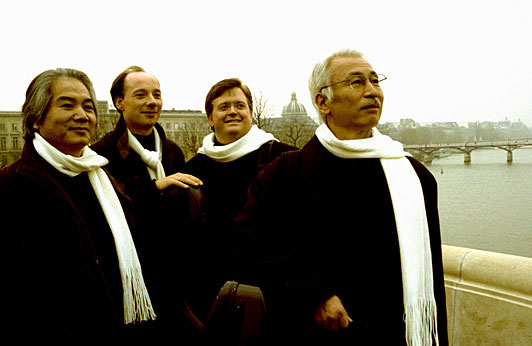
The Tokyo String Quartet is getting ready to say goodbye to two of the legendary ensemble's players.
The two longest-playing members of the Tokyo String Quartet are about to depart after decades with the ensemble. Before that happens, the Broad Stage of Santa Monica is offering an opportunity to hear the current lineup, world-renowned for their precision and prowess.
Violist Kazuhide Isomura is the last remaining original member of the quartet, founded in 1969 at the Juilliard School of Music. He and second violinist Kikeui Ikeda, who joined in 1974, have announced that they will retire in 2013. Since they joined the quartet, it has performed thousands of concerts, guest-starred on Sesame Street, released dozens of recordings and become the quartet-in-residence at the Yale School of Music.
This Saturday, March 3, at 4 p.m., the group will perform a program of Haydn, Grieg and Debussy on the so-called Paganini Quartet—Stradivarius instruments named after the 19th century virtuoso who once owned them. Tickets to the concert range from $32 to $75, and are available online or by calling (310) 434-3200. Directions to the Broad Stage are available on the website.
Posted 2/29/12
Geffen’s gone crazy for kids
February 29, 2012
It’s always a good idea to use jugglers, stilt-walkers and puppets if your goal is to keep children in their seats.
At the Geffen Playhouse, the quirky Troubadour Theatre Company will pull rabbits out of every imaginable hat for Funky Punks!—a live, circus-themed series of sketches. The production is part of the playhouse’s “Saturday Scene,” a set of performances specifically tailored for families. Complimentary snacks will be served after the show.
The bulk of the programming at the UCLA-affiliated Geffen Playhouse is classic and contemporary plays for adults. Saturday Scene is part of the playhouse’s education and outreach efforts, which are designed to foster an appreciation of theater in young people and the community.
Funky Punks! takes the stage Saturday, March 3, at 11 a.m., and is recommended for children ages 5 through 11. Tickets are $15 for adults and $10 for children. The Geffen Playhouse is located at 10886 Le Conte Avenue in Westwood.
Posted 2/29/12
Thoughts on a rock star
February 29, 2012
During the next week, you’ll surely see lots of pictures of a huge red contraption hauling a shrink-wrapped boulder along the streets of four counties, inching its way at night toward the Los Angeles County Museum of Art.
And I suspect some of you will be asking yourselves (and others), why all the fuss over a 340-ton chunk of granite from some Riverside quarry? This, you call art?
My answer to that, in a word, is yes. That said, I do understand some of the skepticism, which is why I thought I’d share with you what I find so inspiring—so artistic—about this monumental, privately-funded project.
The boulder is just one facet of a work called “Levitated Mass,” conceived by Michael Heizer, the reclusive Nevada artist who has dedicated himself for decades to massive undertakings using the offerings of the earth as his primary media. At LACMA, The Rock, as it has come to be called, will be positioned over a concrete trench that allows visitors to walk underneath, creating a sense that the boulder is levitating.
“Levitated Mass” and Heizer’s other big, outdoor projects are reminders to me of how small, physically, we are in the scheme of things. They almost demand humility and introspection. Indeed, the whole oversized effort—the transport, the engineering required to install the rock at LACMA, all of it—is part of the art to me.
Some people, of course, will always view Heizer’s LACMA work as simply a big rock. But to others, including me, it will represent something far more emotional and soulful. And that’s as it should be given the subjective nature of art—or, in this case, the art of nature.
The other night, in the chill air of Riverside County shortly before The Rock finally hit the road, I was struck by how the ambition of one man’s vision could not be realized without the specialized collaboration of so many others—the quarry workers, the hard-hatted crew responsible for moving the rock, the beaming museum executives who pulled together the funding. Then there were the scores of spectators who knew they were witnessing something special, something transcendent.
“This is a once in a lifetime experience, to see something like this,” said one. “This has been here for like 20,000 years, and now it’s art.”
My thoughts exactly.
(Click here for a map of where you can see The Rock as it makes its journey to LACMA.)
Posted 3/1/12
Finally, “The Rock” meets the road
February 29, 2012
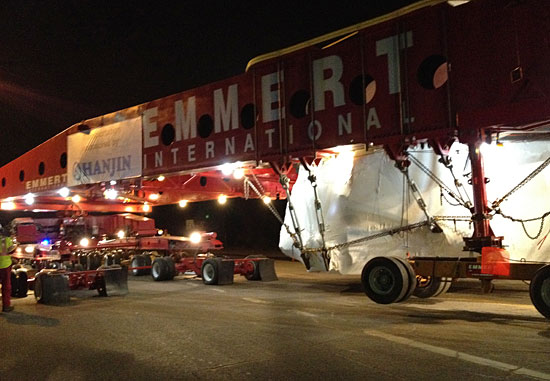
The Rock begins its nine-day journey to LACMA, where it will be used in Michael Heizer's "Levitated Mass."
With a round of applause and two mighty blasts of a truck horn, The Rock finally hit the road at 10:37 p.m. on Tuesday in what may be the most talked about slow-speed odyssey since O.J. Simpson’s Bronco snaked through the Southland’s streets.
The 340-ton boulder that is the centerpiece of “Levitated Mass,” Michael Heizer’s new LACMA installation took seven minutes just to make it out of the Stone Valley Materials Inc. quarry in Riverside County.
A crowd of several hundred cheered and shivered as the behemoth began its epic journey. Covered in white shrink-wrap to ward off taggers, it rode on a massive red transporter and looked, under the vehicle’s bright lights, like a well-lit iceberg.
“This is a once in a lifetime experience, to see something like this,” said Stan Ortman of Chino Hills, who spotted the boulder on his way home from work and stopped. “This has been here for like 20,000 years, and now it’s art.”
The Rock, as it affectionately came to be known, has been waiting for what seems like eons to head out to LACMA, where it will be positioned over a concrete trench in a manner that will make it look as if it is levitating.
That Thursday night’s festive send-off even happened is a bureaucratic miracle of sorts. Although millions of dollars in transportation costs are being underwritten by corporate donor Hanjin Shipping, the move required delicate and sometimes contentious negotiations with 22 cities and four counties. As early as Tuesday morning, some municipalities were still demanding various concessions from the museum in exchange for permits.
For the next nine days, The Rock will be cradled on its 299-foot-long, 27-foot-wide steel carriage as it travels on surface streets at speeds of less than 5 mph. Crews of workers will rush ahead to make sure utility and power lines are kept clear.
The Rock reached its first stop before dawn at a wide-open strip of private property at Mission Boulevard and Bellegrave Avenue in Glen Avon. It will spend all of Wednesday there before setting off in darkness on its next leg, which, if all goes according to plan, will get it as far as Mission Boulevard and Grove Avenue, near LA/Ontario International Airport.
(For a full LACMA “Gawker’s Guide” to The Rock’s trip, click here.)
On Tuesday night, several hundred people came by during the evening to bid The Rock bon voyage, including LACMA Director Michael Govan, Supervisor Zev Yaroslavsky, Jurupa Valley Mayor Laura Roughton, and Dan Johnston, who, as project manager for the quarry’s former owner, sold the boulder to Heizer.
Govan said that, when Heizer first set eyes on granite boulder, which had been dynamited from the side of the mountain, “he called me… and said it was the most beautiful rock he’d ever seen.”
Although Heizer, who is famously reclusive, was not in attendance Tuesday, Govan said he’d seen him earlier in the day at the artist’s home in Nevada. “He said there was nothing he could do to help move the rock,” Govan explained, “so he wouldn’t be here. But he’s excited. When we first started this, we weren’t sure it would actually happen. The engineering, the organization, all the permissions—there were a lot of doubters. But now it’s happening, and it’s going to be a real gift to the public. It’s going to be great.”
The crowd tended to agree.
Daniel Ponti, a Glen Avon photographer, said he had been “waitin’ months for that darn thing to move,” and checking its progress daily. Saul Gomez, 14, of Sunnyslope, said his father had alerted him to The Rock’s presence and sent him to look with his mom and his sister Samantha. “I’ve never seen anything like it,” the boy said. “It’s huge!”
Others were as amused as they were awestruck.
“Pretty big rock, huh?” observed Dave Sharp of nearby East Highland, a union employee whose wife, Leslie Hubbs, said she was the niece of the quarry’s former owner. “I think it’s crazy. It’s great, but it’s nuts.”
Stephen Vander Hart, the quarry’s current owner, said the boulder had been loaded since December and ready to roll since Saturday morning. All week, he said, bystanders had been coming by to check it out.
As the sun set Tuesday, commuters and neighbors gathered to pose with the boulder and buy Southern-style barbecue from an enterprising local chef. “We’re re gonna miss it,” said Vander Hart. “It’s pretty impressive. I think people are gonna get a kick out of seeing it out there on the road.”
The Rock will travel only at night. In addition to the first two stops in Riverside County, it will stop in Diamond Bar, Rowland Heights (it will be across the street from Pathfinder Community Regional Park both Saturday and Sunday), La Mirada, Lakewood, Long Beach’s Bixby Knolls neighborhood, Carson, and Los Angeles (near Exposition Park).
It will rest during the day and arrive at LACMA on Friday sometime before dawn. There, it will be positioned over the other half of Heizer’s artwork—a massive concrete trench on the Resnick Pavilion lawn.
Posted 2/29/12
County gets a new bike plan at last
February 28, 2012
After 37 years, multiple revisions and a flurry of last-minute additions, Los Angeles County finally has a new bicycle master plan intended to create a more cycling-friendly environment in unincorporated areas over the next two decades.
The Bicycle Master Plan, adopted by the Board of Supervisors on a 4-0 vote, with Supervisor Michael D. Antonovich abstaining, represents the first overhaul of county bike policies in place since 1975.
The new bike master plan “will give us a real road map, no pun intended, to take our bicycle planning and implementation to a new level,” Board Chairman Zev Yaroslavsky said.
When fully realized by 2032, the plan will vastly expand the existing 144-mile network, adding 832 miles of new bikeways in unincorporated areas at an estimated cost of $331 million. Significantly, it also formally signals that the county wants to become an innovator in incorporating bikeway facilities into a metropolis known worldwide for its automobile-centric ways.
Work on the plan started in 2008, said Mary Reyes of the Department of Public Works, which developed the biking blueprint along with other county departments including Regional Planning and Public Health. She said it was created against the backdrop of a national movement increasingly championing bicycling as an important and desirable transportation alternative in a society battling problems ranging from high gas prices to chronic diseases driven by physical inactivity.
Los Angeles cycling advocates, initially discouraged by what they saw as a business-as-usual approach in the plan’s early stages, praised the county on Tuesday for making a sharp U-turn toward innovation at the end of the process.
County staffers have “risen to the challenge to make this a really visionary plan,” said Alexis Lantz, planning and policy director for the Los Angeles County Bicycle Coalition.
Another activist, USC cycling team coach Eric Bruins, said the plan could be “a model for the rest of the country.” The Board of Supervisors, acting on a motion by Yaroslavsky, directed county bicycle planners in November to come up with a revised master plan that included forward-looking features such as painted bike lanes and “cycle tracks,” in which a barrier separates bike lanes from car traffic.
On Tuesday, there was more fine-tuning to do. A motion by Yaroslavsky and Supervisor Don Knabe changed the wording of the plan to mandate that one kind of innovative treatment—the “bicycle boulevard,” usually designated on a less-busy local or residential street—include traffic-slowing measures as a matter of course.
The plan calls for creating 22.8 miles of such bike boulevards. Traffic-calming measures, such as speed bumps, have been promoted by cycling advocates, who say they are essential to making riders of all ages and abilities, especially families and children, feel safe and comfortable taking to the boulevards. Specific designs for the boulevards will be developed as the plan rolls out, with individual neighborhoods providing input on how the routes will work in their areas.
In addition to bike boulevards, the new plan features almost 274 miles of bike lanes and nearly 72 miles of dedicated bike paths.
Most of the network, however, is devoted to some 463 miles’ worth of “Class III” bike routes—the lowest class of bikeway, with signage but no dedicated space for cyclists.
Some of those Class III routes could be upgraded to full-fledged bike lanes under the Yaroslavsky-Knabe motion, which allows engineers to make the change with a minimum of red tape in suitable locations.
Another motion, by Supervisor Mark Ridley-Thomas, directed county officials to come up with ways to incorporate bike parking at county facilities wherever possible. It also asked for a report on the 10 unincorporated areas with the highest obesity rates, and for implementation and funding plans to get bikeways going in those and other areas. And it directed that a recommended bike route along the Sepulveda Channel in Mar Vista be deleted from the plan. Some in the neighborhood have expressed concerns about the bikeway’s potential for bringing crime into their area.
Antonovich, who abstained from the vote, asked a series of questions about how the bikeways would be funded and said he was concerned about using county road construction funds or Measure R revenue to create the network.
Pat DeChellis, deputy director of Public Works, said road construction funds by law may only be used for small “incidental expenses” such as signs or painting new bike lanes when a road project is being built or repaired. “The vast majority of the expenses, the 300-plus millions of dollars, are going to come from federal, state and regional grant sources,” DeChellis said, with the county providing varying levels of matching funds.
In the bigger scheme of things, the funding required to build the bike network is reasonable, said Lantz, of the bicycle coalition. “This plan is $331 million to complete the entire thing. That’s only a third of the 405 widening project,” she said. “So while it sounds like a lot of money, it’s a lot less than what we’re spending right now to expand our highway system.”
Posted 2/28/12
LACMA “Rock” to roll next week 2
February 27, 2012
Los Angeles art fans may feel like they’ve been waiting since the Stone Age, but it looks like that 340-ton boulder heading for LACMA could be on the road as early as Tuesday, if not the following week.
The Rock, as it has come to be known, is to be the centerpiece of a massive outdoor installation by artist Michael Heizer, who purchased it seven years ago from a Riverside County quarry. It has been waiting there ever since while museum officials worked with a heavy-haul transport company to negotiate its passage from the Inland Empire to the Mid-Wilshire District.
“Nothing is set in stone yet, no pun intended,” said LACMA consultant Meg Spieker Thomas, but all signs are that The Rock’s departure is nearing.
It was scheduled to roll last August, but its progress has been fraught with postponements. First its transporter had to be custom built and then its movers had to plot a surface-street route that could handle a hunk of granite the size of a 2-story building.
The route finally was settled back in October, but then problems arose as word leaked that this would be an unconventional shipment, and the haulers began to negotiate permits with the 21 cities and four counties through which The Rock required passage. Most communities were accommodating, but a handful raised multiple issues. At various points, intervention was required from members of the Board of Supervisors.
Despite the fact that most of the roads being used are longstanding truck routes, Chino insisted that blueprints and repair records be extensively researched to prove that the transporter wouldn’t damage water pipes serving Chino Hills homeowners. Lakewood and Long Beach called for tree trimming to ensure the transporter wouldn’t sideswipe their landscapes. Diamond Bar and Chino demanded that core samples of their pavement be tested. Gardena wanted special assurances that if its street lights were damaged the city would be reimbursed.
“Heavy hauls move through these cities every night,” Thomas said. “People failed to understand that this one was just getting special attention because of the art factor and the publicity.”
But by this week, most, if not all, concerns had been addressed and state permits had been issued for a Tuesday, February 28, departure. Haulers have already shrink-wrapped the rock and loaded it onto its special transporter. Should some snag arise, preventing a Tuesday departure, Thomas said the move would probably be rescheduled for the following week.
The rock will travel only at night, escorted by eight California Highway Patrol officers. During the day, it will be parked and watched over by four security guards. Its layovers, with one possible exception, will last only a day and most will be in the middle of various roadways, with space on either side for traffic to detour around it. The epic journey is expected to take nine or ten nights, traveling at less than 10 miles per hour.
The public will be able to track its progress via LACMA’s web site or a special museum hotline that will be made public as soon as The Rock hits the road.
Updated 2/25/12
It’s official. LACMA announced Friday that The Rock will roll Tuesday at 11 p.m.
Transportation, made possible by Hanjin Shipping, will take about 11 nights, covering 22 cities and four counties. The heavier half of a massive outdoor artwork, “Levitated Mass” by Michael Heizer, the 340-ton boulder will eventually be positioned over a 456-foot-long concrete slot on the LACMA campus. As visitors walk through the slot, the boulder will appear to be levitating.
It is scheduled to arrive at LACMA in the wee hours of Saturday, March 10, and open to the public in the late spring or early summer. Those who want to follow its progress can check LACMA’s Rock hotline at 323-857-6262 for questions, or click here for updates. Want to check out the route? Click here.
A park’s legacy grows in Malibu
February 27, 2012
Legacy Park in Malibu has wildlife, sculptures, outdoor classrooms and five coastal habitats. But to understand why Los Angeles County’s most innovative new recreational area recently racked up its sixth award in 16 months of existence, you have to look deeper—underground, in fact.
Beneath its meandering walkways and drought-tolerant plantings, the 15-acre central park at Cross Creek Road and Pacific Coast Highway is actually a state-of-the-art system for capturing and cleaning urban runoff that would otherwise course to the ocean, carrying bacteria and trash.
Hidden pipes and filters, working in tandem with the park’s landscaping and Malibu’s existing storm water treatment facility, have trapped and decontaminated tens of millions of gallons of toxic storm water since the park opened in October, 2010.
“It’s pretty unique,” says Malibu City Manager Jim Thorsen, noting that the park was just named the American Society of Civil Engineers’ 2011 Project of the Year for California—the latest in a long string of accolades.
“I don’t know of any other places that not only capture and treat their storm water, but then build a park around it and make it possible for visitors to come in and learn.”
The park grew out of longstanding concerns about bacterial contamination from runoff at Malibu Creek, Malibu Lagoon and Surfrider Beach. When winter storms strike in Southern California, the rains carry chemicals and debris into the Santa Monica Bay from as far away as Thousand Oaks and the Santa Monica Mountains, poisoning the ocean and polluting the beach.
Under pressure to comply with clean water mandates, the city bought a vacant lot and—with $13 million in funding amassed from private and public donors, including $700,000 in Proposition A park funds—began turning the dusty tract into what Thorsen has dubbed “an environmental cleaning machine.”
Runoff from some 337 surrounding acres flows into the park via three major storm drains, then is filtered through a system of screens to catch plastic bags, paper cups and other litter. Then the water runs through more filters to a 2.6 million gallon retention pond at the park’s center, where it sits while contaminants settle at the bottom of a natural sedimentation basin.
Finally, the water is piped to the other side of Civic Center Way, where the city’s storm water treatment facility can clean and disinfect it with ozone. Then the cleaned water is used to irrigate the park, or, on rare occasions, is discharged back into Malibu Creek.
“What has really surprised us is how well it has functioned,” says Thorsen. “We’ve seen water go in, the pond fill, the pumps and the system work to perfection, and the water recycle back into the park. It has worked out exactly as it was supposed to work.”
Kathy Haynes, who chaired the ASCE awards committee, calls the park “an innovative example of incorporating sustainability, showing environmental responsibility and using forward thinking.”
For Thorsen, however, the reward is in the number of calls he’s been getting from developers and communities interested in similar projects, and in the public response over the past year as Legacy Park has come to life.
“It looked like a barren desert, when we first planted it,” he says, “but everyone—the people, the birds, the animals—seems to love it. I’m amazed at how much things have grown in just one year.”
Posted 2/6/12
Want to be part of the solution? Some expert tips on how you can avoid contributing to urban runoff are here.




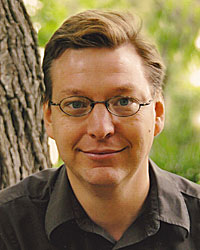
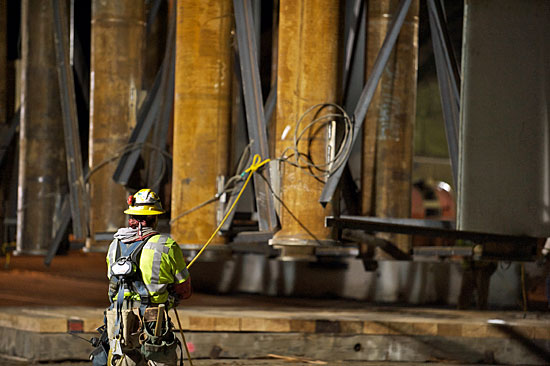

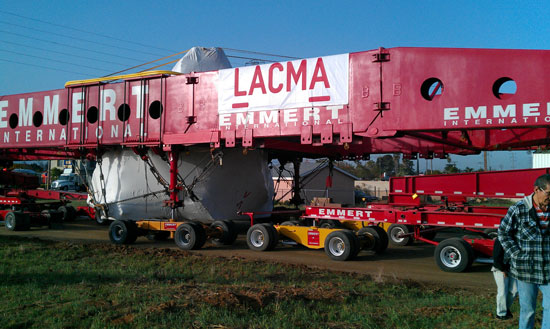
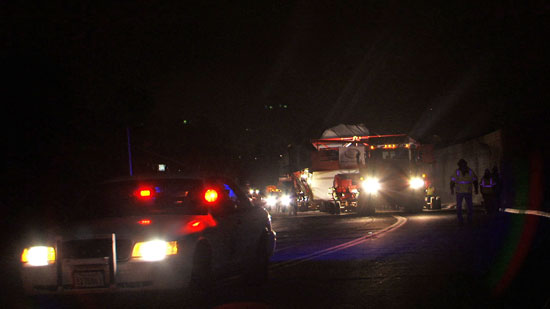
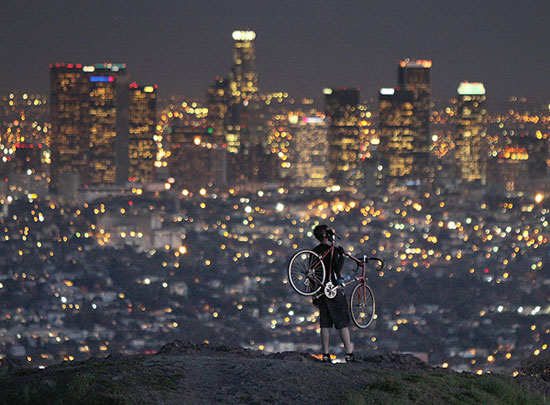
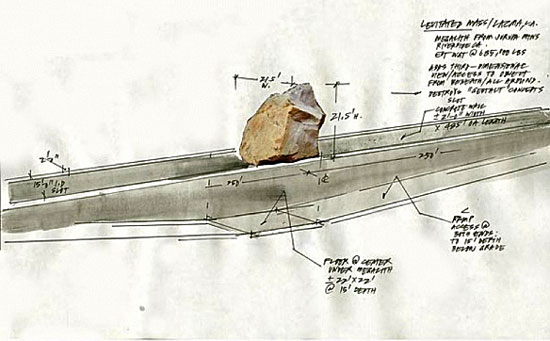
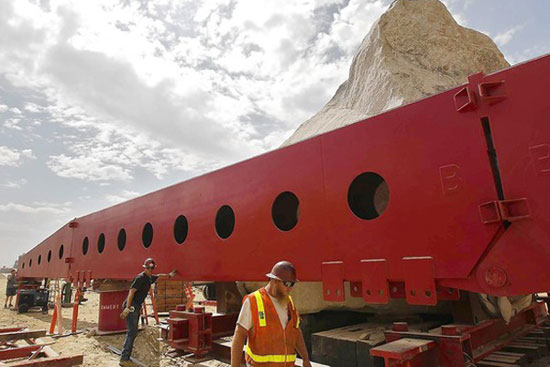
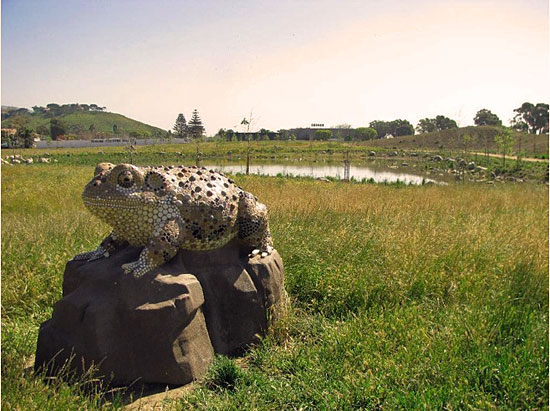
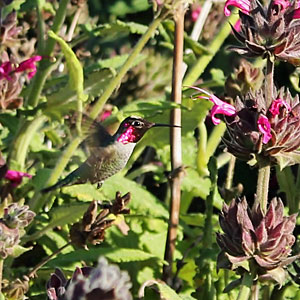
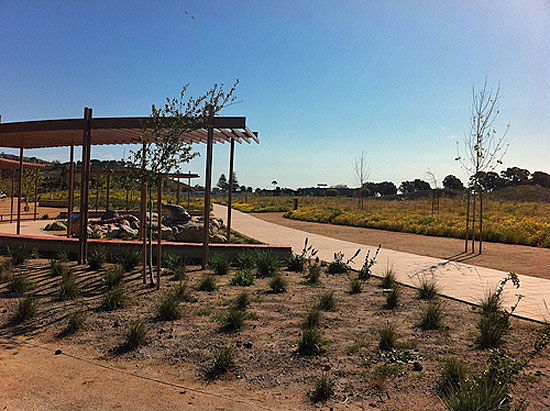





 Check for the latest closure information
Check for the latest closure information








